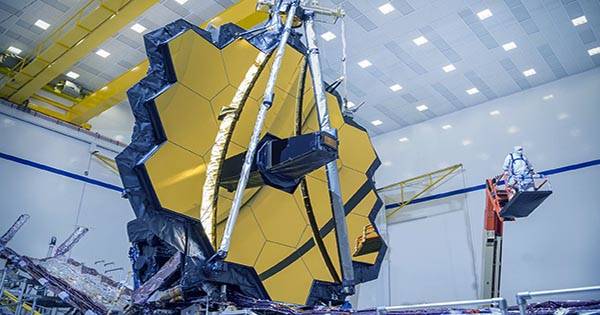JWST, the successor to the Hubble Space Telescope, has been plagued by numerous delays in the many years since it was supposed to launch. The newest delay has been announced by NASA, the European Space Agency (ESA), and the Canadian Space Agency, but it is only for a few weeks this time. The launch schedule for the next-generation space observatory has been pushed back from October 31 to December 18, 2021 (Hopefully).
In a statement, ESA Director of Science Günther Hasinger said, “We now know the day that thousands of people have been working for many years and that millions throughout the world are looking forward to.”
“Thanks to the hard work of all mission partners, Webb and its Ariane 5 launch vehicle are now operational. The final preparations for launch at Europe’s Spaceport are something we’re looking forward to watching.” By the end of this month, the telescope will be delivered to the launch location.
JWST will not be in low-Earth orbit like Hubble. It will instead be placed at the second Lagrangian point, a unique gravitational region that will allow it to orbit the Sun at the same rate as our planet. The Earth is 1.5 million kilometers (932,000 miles) distant from this stable orbit.
It will take four weeks for the observatory to arrive at this location, where it will gradually unfold. Each instrument will be turned on and tested over the next few months in readiness for the start of the science mission six months after launch.
In a statement, Gregory L. Robinson, JWST program director at NASA Headquarters, said, “Webb is a remarkable mission that is the essence of patience.” “Our dedicated staff and global collaborations that have made this extraordinary venture possible have inspired me.
We overcame technical problems as well as challenges during the coronavirus outbreak as a team. I’m also appreciative of Congress’s unwavering support. I’m looking forward to the big day and the spectacular science that will follow now that we have an observatory and a rocket ready to launch.”
The telescope is named after James Webb, the controversial NASA administrator who led the American space agency from 1961 to 1968. It will observe the universe at a wavelength 100 times longer than Hubble and will be 100 times more sensitive. From exoplanets to the first stars and galaxies to ever shine, it will investigate the cosmos like nothing before.
















